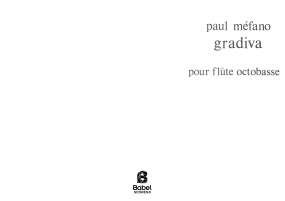Recherche avancée
Chronicle of a Mad Hatter
ISMN : 979-0-2325-5000-8
- Identifiez-vous pour créer une liste
The chemical element mercury was used in the manufacturing process of felt hats in England in the 18th & 19th centuries and, as a consequence, hat makers would come into contact with this harmful substance quite frequently. During the process of turning fur into felt, hatters inhaled the vapors of this highly toxic metal--due to the poor ventilation in most of the factories. Tragically, such exposure often led to mercury poisoning--one of whose symptoms was insanity. Severe mercury exposure can give rise to psychotic reactions characterized by fatigue, delirium, hallucinations, irritability, slurred speech, uncontrollable muscular tremors (or Danbury Shakes) and erethism, also known as Mad Hatter´s Syndrome.
The Mad Hatter character of Lewis Carroll's “Alice in Wonderland” has become frequently associated with the effects of mercury exposure on humans.
This piece depicts each of these reactions, using, in every section, a small six-note motive from the theme of the 1951 movie “Alice in Wonderland.” This creates a musical analogy between the fictional movie/book character and the actual symptoms of the Mad Hatter’s Syndrome.
Technically, the piece is centered around the pitch classes C &C#, which is the basis of the constant presence of semitonal inflections throughout the work. In addition, motive transpositions, intervallic codes, quartal harmony and extended techniques are some of the elements used to offer a more efficient representation of these set of symptoms.
Pages - 42














